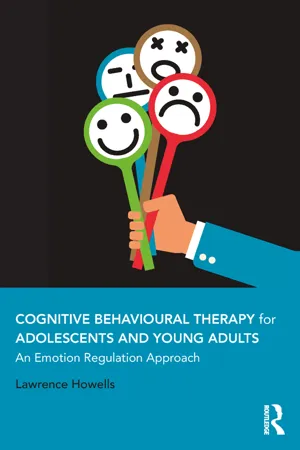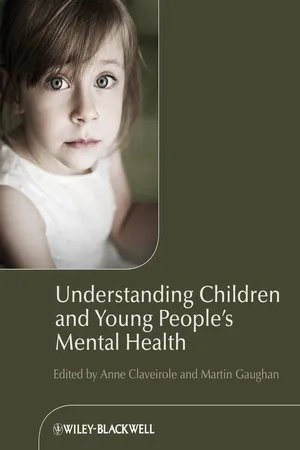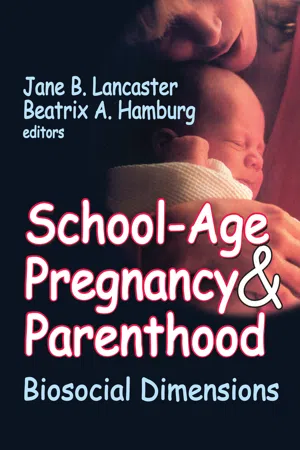Psychology
Physical Development in Adolescence
Physical development in adolescence refers to the rapid and significant changes in the body's structure and function during this stage of life. These changes include growth spurts, sexual maturation, and brain development. Adolescents experience physical changes such as increased muscle mass, changes in body shape, and the development of secondary sexual characteristics, all of which are influenced by genetic, hormonal, and environmental factors.
Written by Perlego with AI-assistance
Related key terms
10 Key excerpts on "Physical Development in Adolescence"
- eBook - ePub
Human Behavior in the Social Environment
Perspectives on Development and the Life Course
- Anissa Taun Rogers(Author)
- 2022(Publication Date)
- Routledge(Publisher)
adolescence, or the teen years, typically begins around ages 10 to 12 and lasts until ages 18 to 22. Because of the many biopsychosocial changes that take place during this time, problems can emerge for individuals and their families. Further, because adolescents are developing their identity and independence while still legally dependent on their parents and guardians, social workers can face many legal, ethical, and practical challenges when working with teen clients. In the sections that follow, we explore some of the most prevalent issues that affect clients during this period of the life span.Developmental Milestones in the Teen Years
The teen years are characterized by continued physical growth and significant changes that signal the onset of sexual maturity and development into adulthood. This section discusses some of these processes and their effects on teens. Quick Guide 12 summarizes the major developments.Quick Guide 12 Developmental Milestones in AdolescencePHYSICAL COGNITIVE PERSONALITY AND EMOTION - Onset of puberty and the hormonal changes associated with it.
- Cognitive skills become more complex and sophisticated.
- Identity development continues with the integration of physical, cognitive, and emotional components to form a more mature identity.
- Development of primary and secondary sex characteristics.
- Thinking becomes more abstract, and teens can think hypothetically about situations.
- Teens can use reason and logic and take the perspective of others when considering situations.
- Movement toward autonomy.
Physical Development
With regard to physical development, a hallmark of adolescence is puberty and the hormonal changes associated with it. Puberty - eBook - ePub
Human Behavior in the Social Environment
Perspectives on Development, the Life Course, and Macro Contexts
- Anissa Taun Rogers(Author)
- 2020(Publication Date)
- Routledge(Publisher)
adolescence, or the teen years, typically begins around ages 10 to 12 and lasts until ages 18 to 22. Because of the many biopsychosocial changes that take place during this time, problems can emerge for individuals and their families. Further, because adolescents are developing their identity and independence while still legally dependent on their parents and guardians, social workers can face many legal, ethical, and practical challenges when working with teen clients. In the sections that follow, we will explore some of the most prevalent issues that affect clients during this period of the life span.DEVELOPMENTAL MILESTONES IN THE TEEN YEARS
The teen years are characterized by continued physical growth and significant changes that signal the onset of sexual maturity and development into adulthood. This section discusses some of these processes and their effects on teens. Quick Guide 12 summarizes the major developments.QUICK GUIDE 12 Developmental Milestones in AdolescencePHYSICAL COGNITIVE PERSONALITY AND EMOTION - Onset of puberty and the hormonal changes associated with it.
- Cognitive skills become more complex and sophisticated.
- Identity development continues with the integration of physical, cognitive, and emotional components to form a more mature identity.
- Development of primary and secondary sex characteristics.
- Thinking becomes more abstract, and teens can think hypothetically about situations.
- Teens can use reason and logic and take the perspective of others when considering situations.
- Movement toward autonomy.
Physical Development
With regard to physical development, a hallmark of adolescence is puberty and the hormonal changes associated with it. Puberty - eBook - ePub
Brief Counselling in Schools
Working with Young People from 11 to 18
- Dennis Lines(Author)
- 2011(Publication Date)
- SAGE Publications Ltd(Publisher)
5Adolescence
This chapter covers:- Puberty
- Sexual development
- Emotional development
- Socialisation
- Cognitive development
- Neuroscience: the teenage brain
- Implications for counselling
- The role of parents and carers
Your children are not your children .They are the sons and daughters of Life’s longing for itself .They come through you but not from you .And though they are with you yet they belong not to you .You may give them your love but not their thoughts, for they have their own thoughts .You may house their bodies but not their souls, for their souls dwell in the house of tomorrow ,which you cannot visit, not even in your dreams .(Gibran, 1972 [1923] )Introduction
Passing through the later years of education, pupils undergo a developmental transition from child to adult, from dependence to autonomy, and this transition in western society is termed ‘adolescence’. This chapter attempts to portray this period of development as it impacts within school and on into college, since brief counselling cannot suitably address teenage difficulties without an understanding of their internal and external world. These characteristic transitions of body and mind are systematically discussed in this chapter.Sexual growth from puberty to late adolescence involves physical and hormonal changes which have relational and social consequences. Emotional development is influenced by early attachments and these have implications for the school counsellor. As young people encounter larger social contexts, different demands are made of them to achieve a range of tasks, which can pose particular tensions for ethnic minority teenagers.Cognitive development is discussed through psychological research and the recent findings in neuroscience, which has widened our understanding of a teenager’s growing mental aptitude and temporary deficit in functioning. The school counsellor is advised to consider this research and attune interventions in light of the client’s altering cognitive abilities. Finally, attention is given to parenting qualities which assist in supporting children to come through adolescence relatively unscathed. - eBook - ePub
- Marc H. Bornstein, Janice L. Genevro(Authors)
- 2014(Publication Date)
- Psychology Press(Publisher)
Experience . Experience also plays a role in influencing the reasoning capacity and resulting behavior of adolescents. Emotion may interfere with clear thinking among adults as well as adolescents, but a lack of experience with a particular situation may increase anxiety and emotionality among adolescents. As mentioned earlier, adolescents may be especially susceptible to hot cognitions, situations that are emotionally laden and that may lead them to respond impulsively. For example, initial experiences with sexually charged situations, such as being touched in erogenous areas, may befuddle adolescents, whereas the same touches may not be confusing or anxiety producing in a more experienced adult (e.g., Petersen & Leffert, 1995a). As adolescents begin to understand their own feelings elicited in particular situations, they become more able to use their reasoning abilities and behave in ways consistent with their values and expectations.Summary of Adolescent Development
Adolescence may be characterized as a developmental period involving change in every domain of development and all major contexts (Petersen, 1988). Puberty and the transition to middle or junior high school have particular importance because of their direct impact on the developing adolescent and because of their effects on other aspects of change. For example, puberty results in adult-sized individuals with mature reproductive capacity, both factors that have major social significance. School transitions involve change from the neighborhood-based peer group to a larger network of peers; this also is associated with changes in friendship patterns.Adolescence brings an atmosphere of uncertainty for the individual. In addition to the normative developmental changes in adolescence, non-normative changes may occur as well. For example, death or illness of family members, parental divorce, or changes in the economic position of the family all occur at predictable frequencies for adolescents.PHYSICAL AND MENTAL HEALTH IN ADOLESCENCE
The amount of change experienced by young people during adolescence may be stressful and exceed their capacity to cope. Some adolescents will meet the challenge and develop more effective coping styles. Others, unfortunately, are likely to develop ineffective coping styles that can become lifelong patterns. The following section examines examples of the physiological, behavioral, and health factors associated with stress and coping during adolescence. - eBook - ePub
Cognitive Behavioural Therapy for Adolescents and Young Adults
An Emotion Regulation Approach
- Lawrence Howells(Author)
- 2018(Publication Date)
- Routledge(Publisher)
In today’s society, there are good reasons to adopt a broader age range. Firstly, many of the changes associated with adolescence are beginning earlier; children appear to be entering puberty at a younger age than they did previously (see below) and many other aspects of adolescence (such as sexual exploration) are beginning earlier, fuelled by changes in society and access to information (Bloch, 1995). Other aspects of adolescence, however, are delayed and are occurring later than in previous generations. Across the developed world, for example, young people are spending increasing amounts of time in education and are also financially dependent on their families for longer. These societal changes do not impact equally across society and there is general consensus that the process of adolescent transition has become extended, pluralised, and fragmented (Coleman, 2011). Finally, research into brain development has found that the brain continues to evolve and develop in quite fundamental ways all the way through into the late 20s and early 30s (see below). Given this widening age range, some authors have tended to break down the period into smaller timeframes, for example early adolescence, later adolescence, and emerging adulthood (Patton et al., 2016).Given the level of individual difference in the rate of transition, it is perhaps imprudent to adopt rigid age ranges to define adolescence. However, to give a rough idea about the population we are considering, adolescence is considered in this book to cover the period between the ages of 10 and 25 years.It is important to outline this idea to clients, families, and other clinicians. Adolescence is not a phase of life that ceases abruptly upon turning 18, but is a more nuanced and gradual phase lasting into the twenties and often longer. Reference to brain research in relation to this explanation often adds significant weight to the argument! As individuals in their twenties tend not to identify themselves as adolescents, the term “adolescents and young adults” is used throughout this book.Physical development
Puberty is a period of physical development characterised by rapid changes in body size, shape, and composition. It produces the most rapid rate of linear growth since infancy and the greatest sexual differentiation since foetal life (Rogol, Roemmich, and Clark, 2002).Sexual maturation occurs during puberty under the influence of gonadal steroid hormones; primarily testosterone in boys and oestradiol in girls. The early stages of sexual maturation often involve the appearance of pubic hair, adult-type body odour, and occasionally acne. In boys, the first signs of formal sexual maturation are the thinning and reddening of the scrotum and the enlargement of the testes. This occurs on average around 111/2 to 12 years, although is considered normal between 9 and 14. Sperm production and ejaculatory capacity are present during early sexual development (on average around 131/2 years). - Anne Claveirole, Martin Gaughan(Authors)
- 2011(Publication Date)
- Wiley-Blackwell(Publisher)
Chapter 3 PSYCHOSOCIAL DEVELOPMENT Geraldine Jones School of Life, Sport and Social Sciences, Edinburgh Napier University, Edinburgh, Scotland 3.1 IntroductionDuring childhood and adolescence, young people have to cope with a myriad of challenges. The psychological effects of the development of cognition, identity and physical maturation in childhood and adolescence are play out in a complex interrelationship between the individual and their environment. In this chapter we will discuss the psychosocial development of children, particularly attachment in infancy, and the development of adolescent identity. Mental health difficulties can occur during childhood, in the transition between childhood and adolescence, or during adolescence. It is important to remember that for all the individuals in these three categories there is an additional burden of having to cope with normal adolescent developmental issues. These developmental issues will be discussed in this chapter. The chapter ends with a discussion of a recent contextual model of identity development which explains the psychological impact of risk and stresses in the lives of children and adolescents. Before discussing attachment, we will consider how different theoretical perspectives within psychology affect how we perceive development.3.2 Theories of developmentLearning outcomesAfter reading this chapter, you should be able to: 1. Evaluate Bowlby’s (1969) attachment theory and the internal working model. 2. Critically evaluate Erikson’s theory of identity formation. 3. Analyse the concept of adolescent egocentrism. 4. Understand the psychological impact of puberty and its timing. 5. Evaluate the contextual critique of the organismic theories of psychosocial development.6. Apply a case study to Spencer et al .’s (1997) contextual PVEST model.In the past 30 years, child developmental psychology has altered its theoretical approach. There has been a challenge to the assumptions previously made that were based on organismic and mechanistic models of development (Lerner et al- eBook - ePub
Smooth Sailing or Stormy Waters?
Family Transitions Through Adolescence and Their Implications for Practice and Policy
- Rena D. Harold, Lisa G. Colarossi, Lucy R. Mercier(Authors)
- 2020(Publication Date)
- Routledge(Publisher)
Victimization of girls a worry for parents- Teen runaways return home
Puberty: Bodily Changes and Societal Reactions
Physical changes are most frequently used to demarcate the end of childhood and the beginning of adolescence. The age at which pubertal changes take place varies, but they typically happen between 10 and 15 years of age (Tanner, 1962; see Table 3.2 ). Although these changes are often credited with causing the myriad difficulties that parents and children experience during adolescence, physiological changes are just the catalyst for the dynamic, multi-level interactions that take place in the social environment, creating the whole of the “adolescent experience.” The combination of physical and social processes impact the behavioral and emotional experiences that parents and adolescents face. After puberty, the world begins to change for an adolescent and, in turn, adolescents begin to have greater effects on the world around them. This dynamic interplay between the adolescent and his/her family (and with their broader community of friends, teachers, and other adults) shapes adolescents’ experiences for better or worse.TABLE 3.2 Typical Timing of Adolescent Pubertal DevelopmentAge in yearsPubertal changeFemalesMalesHeight spurt 9-15 10-18 Genital development 11-14 10-17 Menarche 10-17 Breast growth 8-18 Timing
Pubertal changes are set in motion by a complex interaction between the brain, pituitary gland, and the reproductive organs. Genetics, nutrition, hormonal changes, and overall health status all impact the physical growth process. In turn, the timing and sequencing of these changes is reacted to by peers and adults in ways that signal role changes to adolescents, who are now expected to engage in different behaviors than they did as children.Pubertal timing has an important impact on social responses. For example, early maturation for girls and late maturation for boys may be risk factors due to different societal reactions to boys’ and girls’ physical development. Boys who develop mature physical characteristics early in the pubertal age range tend to gain more social status among their peers, have greater athletic advantages, and sometimes better academic functioning than late-maturing boys (Mussen & Jones, 1957). Late-maturing boys seem to be at risk for lower self-esteem and social popularity due to the value placed on physical strength, sports, and masculinity (Peskin, 1967; Petersen & Crockett, 1985). This mother describes her fear and the considerable steps she took to respond to her son’s late development: - eBook - ePub
Teacher and Pupil
Some Socio-Psychological Aspects
- Philip Gammage(Author)
- 2017(Publication Date)
- Routledge(Publisher)
Western societies appear to see adolescence as a clearly separable and definitive stage in personality formation and one brought about by biological changes, notably the onset of puberty, and critically influenced by cultural expectations. Genetic, neuro-endocrine, nutritional and social-psychological factors all combine to provide the host of variables which contribute to the change from child to adult. Certainly, the psychological impact upon the personality of bodily change and the accompanying changes in social expectations can present a bewildering set of possibilities to the pubertal child, particularly when visible discrepancies are extant culturally and even locally and when differences between adult behaviour and adolescent behaviour can seem so subtle or so meaningless. Exploratory behaviour, conflicts and constant reassessments of self-image naturally take place and problems of identification with others may become acute. Possibilities for adult role-playing experiences occur more frequently and, with them, the thirteen or fourteen year old can begin to move away from his derived status of dependency upon parents. The peer group becomes increasingly more important as a general rule and emulation of revered peers and remote adult models is frequent.One of the problems inherent in a technico-industrial society is its demands upon mass education and the necessary prolongation of an adolescent ‘in-between status’, especially for the middle-class or aspiring middle-class youth. Another problem is that of the psycho-sexual acquisition of firm sex-roles which relate to childhood concepts of masculinity and femininity and yet make sense in terms of contemporary physical and socio-cultural expectations. Another is that probably, as Erikson says, adolescence in our present age has been over-diagnosed as a crisis period to the point where a ‘crisis role-set’ is almost deliberately set up and many react accordingly.Very few arbitrary assemblies of adolescents, such as a class of fourteen year olds, can be said to constitute a homogeneous group, since the difference in physique, in levels of intellectual, social and emotional maturity will be so marked. In consequence assumptions regarding ‘norms’ are even less reliable than in earlier childhood. Nevertheless, it is safe to assume that adolescence is - eBook - ePub
- H†kan Stattin, David Magnusson, Hakan Stattin(Authors)
- 2018(Publication Date)
- Routledge(Publisher)
normal adolescent development where pubertal entry is expected to influence the point in time when these changes in self-definitions are supposed to take place. This is perhaps most obvious with respect to the menarche. That differences in self-concept among teenage girls are observed at a particular point in adolescence is partly attributed to the fact that some girls have already had their menarche at this time, and have subsequently changed in their views of themselves, whereas other girls have not yet attained this developmental point. Over time, because all females sooner or later will have their first menstruation, the self-concept of the later-matured girls will match those of the early developers. This individual timing perspective has often meant utilizing a pre-postmenarcheal design at a certain point in time in adolescence in order to demonstrate the effect on self-conception of having passed versus not having attained menarche.Although many attach great importance to the personal significance of physical maturation, there is, as of yet, little consensus as to how to conceptualize the meaning of bodily maturation, the extent of psychological adaptation it requires for the early versus the late developer, and how the changes in bodily proportions and appearance accompanying pubertal growth are connected with changes in self-concept. Different opinions have been expressed about the particular features of the linkage between self-concept and early versus late maturing. Therefore, in order to try to understand the possible implications for self-conception of variations in pubertal maturation we first must address the issue of the meaning ascribed to puberty generally, its salience, the particular demands and options it yields for girls, and their actual experiences in connection with pubertal development.Bodily Development and Psychological Adaptation
Much has been written about the connection between bodily development in adolescence, the adjustment it requires on part of the subject, and its connection with self-concept. In agreement with many clinicians' opinions, with numerous empirical surveys in this area, and with others who have dealt with adolescents' problems, we do not underestimate the role that physical appearance plays for the personal well-being of teenage girls. Much is focused on physical appearance in adolescence (Crocket, Losoff, & Petersen, 1984; Diers, 1974; Lenerz, Kucher, East, Lerner, & Lerner, 1987), and issues connected with body image tend to be of increasing concern from late childhood and onwards among females (Collins & Propert, 1983; Rosenberg & Simmons, 1975). Teenage girls are concerned with how they appear in the eyes of others. Virtually all past and present studies in this area show that teenage girls are quite self-conscious and critical of their physical appearance. Aspects related to physical attractiveness are often found to outnumber problems in other areas. The prominent role of attractiveness and the striving to reach the unattainable ideal are believed to underlie girls' worries, concerning and overcriticism of their perceived physical appearance (Rosenbaum, 1979). - eBook - ePub
School-Age Pregnancy and Parenthood
Biosocial Dimensions
- Beatrix A. Hamburg(Author)
- 2017(Publication Date)
- Routledge(Publisher)
The range of negative medical, personal, and economic outcomes for adolescent pregnancy has been exceedingly well documented, but little attention has been given to understanding the good outcomes. The specific factors and mechanisms that mediate either good or bad outcomes among young mothers have been little studied. The fit between normative capabilities of adolescents at varying stages in their development in relation to the tasks of parenthood and outcomes has not been examined. There is little recognition that during adolescence there are chronological, biological, and social ages of an individual that may be markedly asynchronous. Yet, the known variability in the physical and psychosocial development of adolescents warrants the use of maturational status rather than chronological age in assessing biological and behavioral status during adolescence. For example, maternal adaptations to the needs of the infant may be intrinsically much more difficult for immature adolescents than for more mature mothers. Therefore, adolescent motherhood as a developmental challenge superimposed on the normative tasks of adolescents at differing developmental stages is an important, although neglected, line of inquiry. The developmental perspective should be broadly construed to include a life span perspective and developmental psychopathology.Comparisons will be made with the subset of older, largely minority adolescents for whom their alternate life course results from sociocultural circumstances that predispose toward choosing a strategy of adolescent motherhood and represents competent coping. The typical medical, social, psychological, educational, and economic outcomes for these mothers and their children are discussed in detail by Furstenberg in Chapter 11 .Literature on adolescent sexuality, pregnancy, and motherhood will be reviewed from a developmental perspective. In doing so, there is an effort to identify gaps in knowledge and to highlight promising lines of inquiry for future research.Stages of Adolescence
Terminology and Definitions
In the field of adolescent pregnancy, there is a notable lack of consensus within the ranks of medical professionals and social scientists on the meaning of most of the terms that are in common use. This semantic confusion has greatly complicated the tasks of trying to marshal relevant data, to sort out significant issues, and to determine their relationships to each other.
Learn about this page
Index pages curate the most relevant extracts from our library of academic textbooks. They’ve been created using an in-house natural language model (NLM), each adding context and meaning to key research topics.









